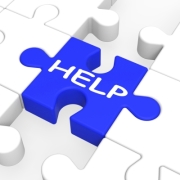
I spent a day with Scott D. Miller, PhD, watching him training people on the power of the therapeutic relationship and how to assess client satisfaction and outcomes with performance metrics for session and outcome rating tools. Since then, I have been fascinated by the healing power of the therapeutic relationship and its relationship to treatment. There are evidence-based practices related to establishing therapeutic relationships at the SAMHSA Evidence-Based Therapeutic Relationships page. Yet at the same time, there needs to be a solid treatment approach. I have seen people not heal even though they had a good relationship with their therapist. And I have heard therapists say that they don’t like evidence-based practice because it takes away from the relationship and choice of the client. Perhaps fear of the unknown talking.
Good therapeutic relationships + effective treatment approaches + assessment of sessions and outcomes by the client= the road to success and healing. And these are all essential in a trauma-informed service environment so that clients receive services within the the five-guiding principles of Trauma-Informed Care (Fallot, 2006): safety, trustworthiness, choice, collaboration, and empowerment.
Recently, trauma therapist and founder of the Trauma Institute and Child Trauma Institute, Ricky Greenwald, PsyD, wrote a great blogpost about the Therapeutic Relationship vs. Treatment Model. Here is an excerpt from the post that has already received 147 shares to date from his blog site.
“When I call therapists in other locations to check them out for a referral, I briefly describe the case and ask what their approach would be. Quite a number of these therapists have said something like, “I mainly focus on the relationship, since that’s where the healing comes from.” In a recent survey I saw a number of similar comments. One question focused on choice of technique in a particular context, and a number of respondents wrote some version of, “The technique is irrelevant – it’s the relationship that heals.” Based on my nonscientific sample, I suspect that this position is not uncommon among therapists.
The way it is expressed indicates that this view of the relationship’s primacy is not about psychodynamic theory – in which the therapy relationship is systematically utilized for healing. Psychodynamic people tell you that they’re psychodynamic; they’re clear about what they’re doing, and about the role of technique. No, these therapists are saying that they’ve extracted the essence of the so-called “common factors” research, and concluded that as long as they develop a good relationship with their client, everything else falls into place.
The common factors research – focusing on factors such as empathy, warmth, and positive regard, that may be common across treatment approaches – is quite important, and the centrality of common factors to therapy’s effectiveness has become ever more widely recognized and embraced (e.g., Duncan, Miller, Wampold, & Hubble, 2010). However, this valuing of the relationship over treatment approach reflects a profound misunderstanding of the common factors research.
Duncan & colleagues’ (2010) recent synthesis of the common factors research emphasized the integration and inextricability of the various factors. That is, you can’t just add more empathy or therapeutic alliance to an otherwise non-viable treatment approach and suddenly have a viable treatment. Rather, the common factors are necessarily grounded in a coherent and credible treatment model – itself a common factor – that is embraced by therapist and client. Such a treatment model serves as the foundation for the explanation of the problem, the plans for rectifying the problem, and the hope for successful change. These constitute much of the basis for the therapeutic alliance, the most important predictor of treatment success (Norcross, 2010).
Although it is heartening to see that the common factors literature has reached the practice community, it is concerning to see that it has been commonly misinterpreted in such a way that many therapists may be disregarding the importance of using a coherent treatment approach.”
via Ricky Greenwald, PsyD, Once Upon A Time… TI/CTI Blog– Therapeutic Relationship vs. Treatment Model, August 6, 2013.
Like this post? check out our other posts on Behind the Human Curtain.
Author for the introductory paragraphs: Lesa Fichte, LMSW, Director of Continuing Education
Photo Credit: Help Puzzle by Stuart Miles, www.freedigitalphotos.net

Divine Guide Within, thanks for linking our blog to your recent post Letting “It In!
Thanks so much, David, for adding the link to our post onto your blog post! As a new blogger, your support is greatly appreciated!
Awesome blog! Do you have any suggestions for aspiring writers?
I’m hoping to start my own website soon but I’m a little
lost on everything. Would you advise starting with a free platform like WordPress
or go for a paid option? There are so many options out there that
I’m completely overwhelmed .. Any recommendations? Bless
you!
Thank you for the compliment, Free Tarot Reading! WordPress is a very good free blog site so I would recommend using it over a paid site, especially if you are just starting to blog. I would suggest getting a book on blogging or finding some websites that offer info about the best practices in blogging. Amazon has some inexpensive Kindle books about blogging and your local library may be a good resource for books about blogging. Best wishes to you!